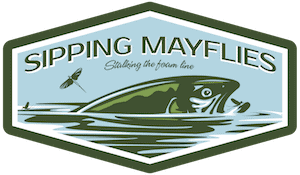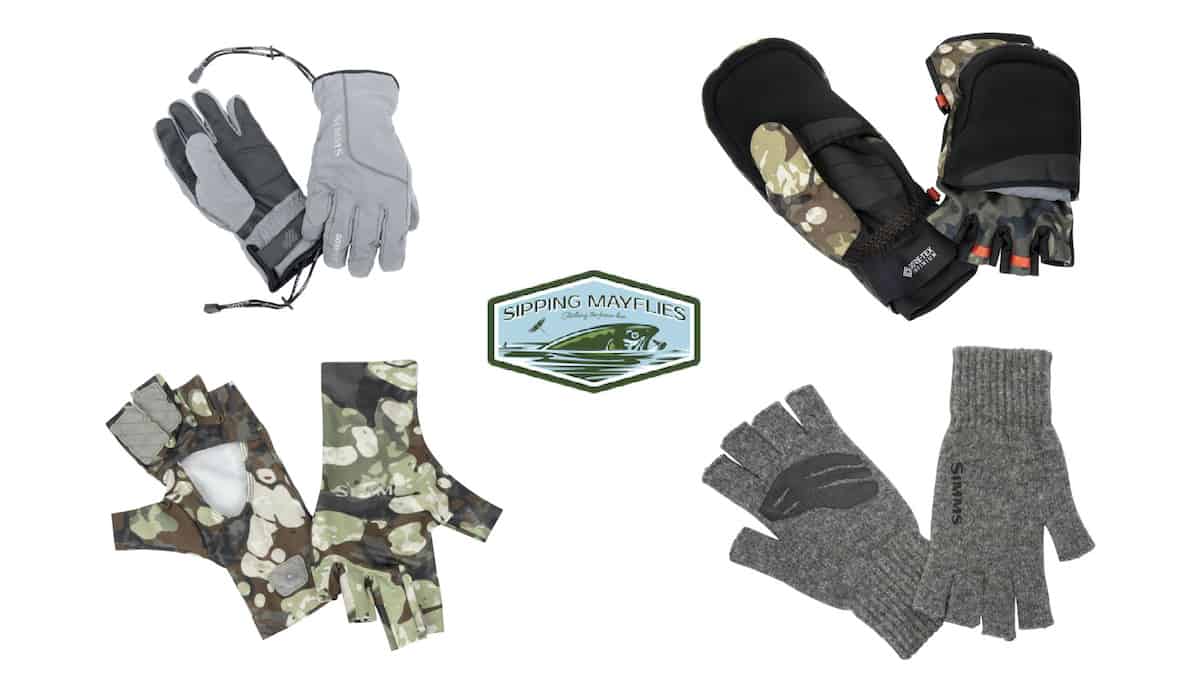The Best Fly Fishing Gloves
for Winter and cold Weather
February 28th, 2022
We’ve all been there. It’s winter and you’re standing in a river, wishing there was a way to warm your hands. Your cold fingers move at a fraction of the speed they do when you’re warm, and you’re considering going back to your vehicle and turning on the heat.
There are plenty of gloves made for winter fly fishing but most of them are junk. It’s pretty simple, you’re going to want to stick with Simms the vast majority of the time. They specialize in fly fishing outerwear (not rods or reels), and they know what they’re doing.
Many freshwater and saltwater anglers pack away their fly rods for winter. But, I can assure you the trout are still eating and the bugs are still hatching.
In the below article, I’ll show you the best cold weather fly fishing gloves I’ve ever used, based upon my own experiences. Don’t pay any attention to the lists you see online where authors simply regurgitate the manufacturer’s product descriptions.
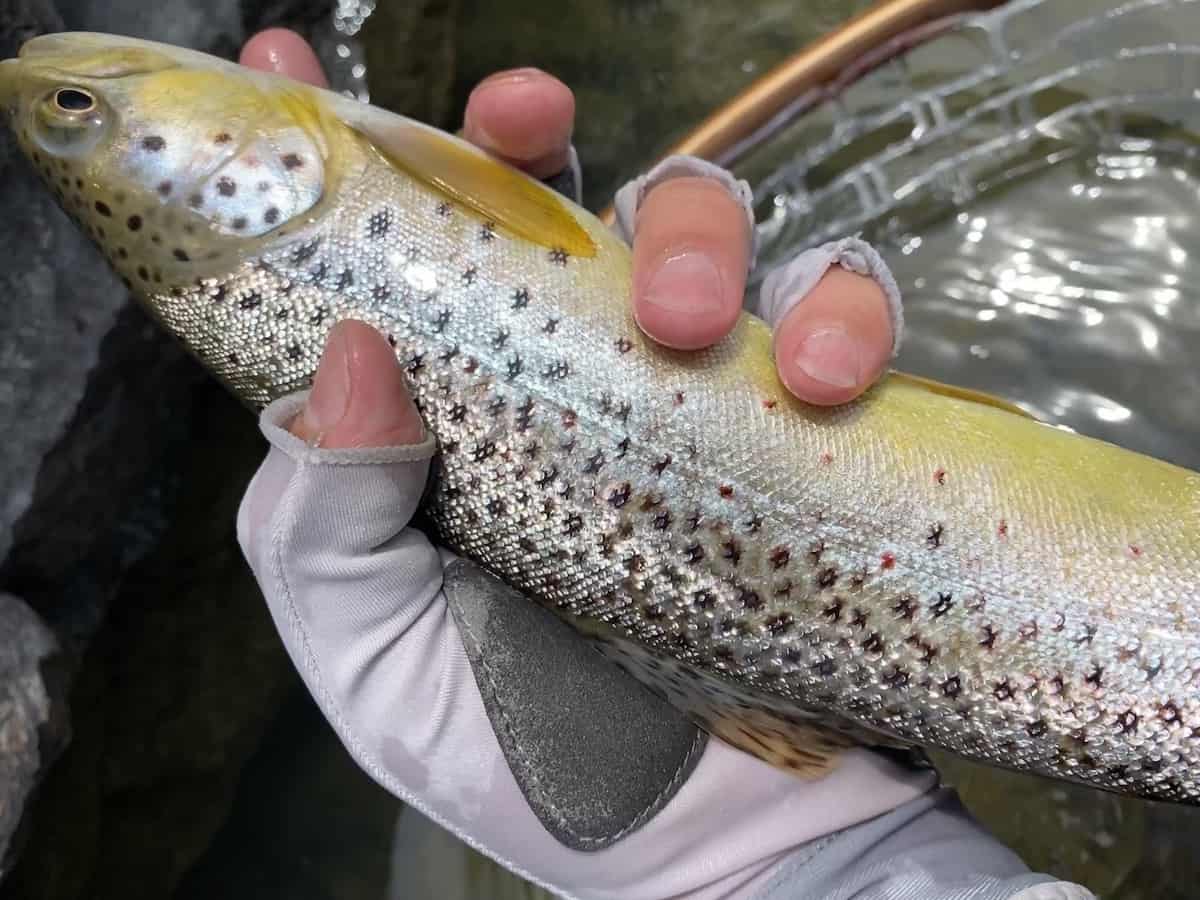
In the above picture I’m holding a brown trout (Salmo trutta) that I caught in February, one of many that day. Pictured are some of my thinner gloves, which offer more dexterity but less heat retention.
Fly Fishing Glove Fabrics Explained
Cotton
Cotton is your enemy.
Don’t ever wear cotton gloves when your goal is to stay warm while fly fishing. Cotton sounds comfortable, but it absorbs and retains moisture and is a poor insulating material.
Avoid it all all costs when it comes to winter fishing.
Neoprene
Neoprene is used in wetsuits. It’s a synthetic rubber that is waterproof (closed-cell foam).
It’s also fairly good as an insulating material, in that it’ll trap heat against your skin.
I’ve worn neoprene gloves before, and my main complaint is that while it traps heat against your skin, it also traps moisture. So, it ends up being clammy, and I don’t recommend it as a glove material.
Merino Wool
There is no more perfect material for a fly fishing glove than wool.
Wool is a fantastic insulator, and won’t pull heat from your body. It also wicks water away from your skin, traps it in between its fibers (the fibers themselves don’t absorb the water), and releases the water into the air.
Here’s where it gets crazy.
Merino wool, which is specific type of wool that you want, actually produces heat when it gets wet. When water molecules are held between wool fibers, the hydrogen bonds start breaking down. This produces measurable heat.
Gore-Tex
Gore-Tex is a synthetic microporous material similar to rubber.
The reason it’s so highly regarded for inclement weather is that while it’s waterproof from the outside, it allows breathability from the inside. This prevents the clammy condensation I mentioned in the section on neoprene.
You wouldn’t want to wear Gore-Tex gloves directly against your skin, but a wool base layer covered by a Gore-Tex outer layer can be hugely advantageous for very cold days.
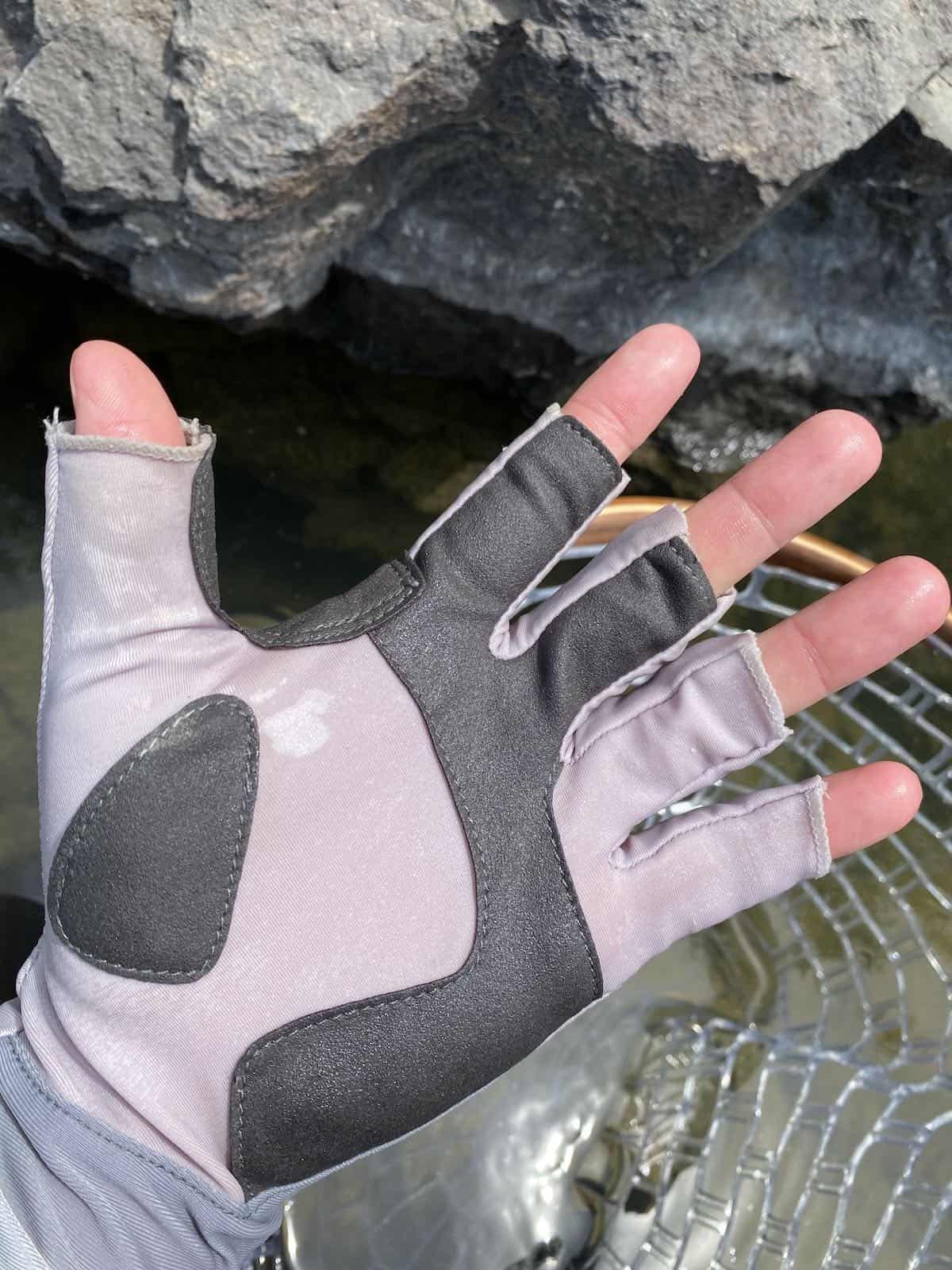
WARNING: Always remember that while gloves can keep you warm and dry, if you get them wet (by grabbing a fish, for example), your gloves are going to stay wet or damp for quite a while, regardless of the fabric. I often use thinner gloves (pictured above) during winter because I value feel more than warmth when I’m fly fishing in cold weather. In this photograph my gloves are soaked.
The Best Gloves for Winter Fly Fishing
I greatly value experience over word-of-mouth or marketing. You can be sure that any products I review, are products I’ve used. This is contrary to most fly angling sites, where product description bullets are simply pulled from a manufacturer’s website.
I live in Idaho, where wintertime is cold, and I’ve tried plenty of cold-weather outerwear products. As a result, here are my reviews of the best fly fishing gloves for winter, in no particular order:
Simms Pro Dry (plus liner)
These high-end gloves (pictured at the top-left in grey below) are comprised of two separate pieces of material. Effectively two gloves in one.
There is a three-finger merino wool liner glove (the index and middle finger are left exposed) that you wear inside the thicker Gore-Tex glove. The reason for this is that tying a knot or pulling a fly out of a trout’s mouth is impossible with the outer glove, so you can pull it off and you maintain some level of heat retention.
The outer shell is made of Gore-Tex. They’re advertised as waterproof and breathable, and they usually are, but if you dunk your glove completely underwater, water will seep into the glove from your wrist. This is something Simms could improve.
Weighing in at 7oz, they’re pretty light.
You won’t want to strip streamers if you’ve got the thicker outer glove on, it’s just not ideal.
One feature that I thought would be gimmicky, but turned out to be useful, is that there’s a special slot on the back of the glove for inserting a heat pack. As long as you don’t get the heat pack wet, it’ll function well and you can feel the heat.
These gloves are most appropriate if you really struggle keeping your hands warm (poor circulation perhaps), or if your temperatures are frigid or below zero. If it’s 40F, you probably don’t need these.
Simms ExStream Foldover Mitten
These gloves are for hardcore cold weather. Think steelhead fishing in the dead of winter, or fly angling in northern Montana in January.
The unique feature here is that the top half of the mitten folds back revealing your four fingers for precision work (tying on flies, etc). The thumb material folds back too, so you have all five fingers available. These are pictured at the top-right in the above photoraph.
The shell is made of Gore-Tex, which again, is waterproof.
Unlike the Pro Dry gloves, these have a “DryCuff” system whereby the material surrounding your wrist fits tighter to prevent water from seeping in. The strange thing is, if you dunk your mitten completely underwater, even if water doesn’t come in at your wrist, it’ll come in at your fingers. Don’t dunk these.
Simms used to have a snap on the back of the glove to hold the foldover material, but as baffling as it is, they removed it. Come on Simms. This is my main complaint, and why I don’t wear these more often.
These gloves tend to run small, so I’d recommend getting a size larger than you’re used to buying.
Simms Wool Half-Fingered Gloves
These gloves are classics, and I always keep some in my fly fishing vehicle. They’re my go-to gloves when temperatures at the river are chilly, but not too cold. They’re pictured in grey on the bottom-right in the above photograph.
They’re made entirely of wool (remember how much we like wool?!), and they’re thinner than the prior two gloves I mentioned, meaning you have a more precise connection to your fly rod. This is important to me, as I mentioned earlier.
The fingers are exposed from around your second knuckle, making strips and changing flies a breeze.
They’re not as warm as some other gloves, but they’re extremely functional. If you happen to get them wet, wring them out really well and put them back on. They’ll still feel damp, but not wet.
These are for fly anglers who value feel over insulation. I highly recommend picking up a pair. I really like them, pictured below.
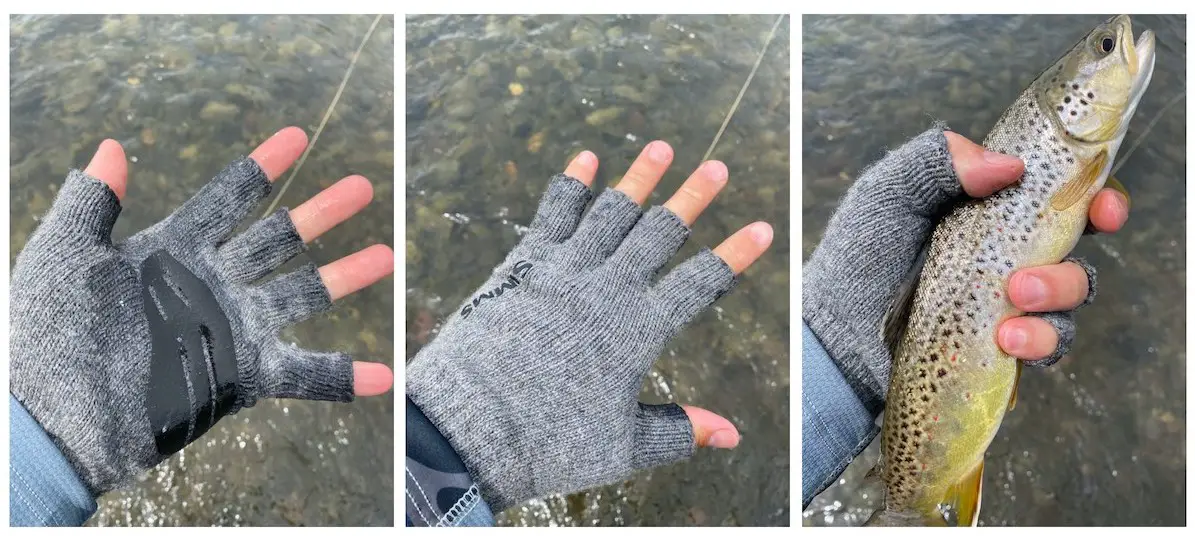
Simms SolarFlex Fingerless Gloves
These are minimalist cold-weather gloves, but I use them a lot. They’re pictured on the bottom-left in the above photograph.
In fact, they’re actually warmer-weather gloves and aren’t marketed as winter gloves. But, they’re my favorite cool-to-cold weather gloves.
They effectively take the edge off of the cold, and when temperatures are in the 40’s on the river, these do the job well. Where I live (in Idaho), it’s usually 25F to 45F from December through February.
Orvis Sungloves are similar, and I use them occasionally, but I don’t like the thicker palm material (goat leather) since it dampens the feel.
Unlike Orvis, Simms SolarFlex gloves have an open palm (no material) to maximize feel. This is such a great feature.
Despite the thin material, they have a UPF rating of 50. The sun in weaker during the winter, but it’s still there.
Speaking of the thin material, stripping streamers is effortless with these gloves.
I mentioned before that you don’t want to get these gloves wet. If they get wet, they stay wet.
Tips For Keeping Your Hands Warm During Winter
I fly fish nearly every week year round (and sometimes several times each week). This includes the cold season, and I’ve learned how to stay warm(er) during my outings. Here are a few tips for you:
- Use hand warmers for a boost. Generally, if I’m using them, I’ll put them one in each of my jacket pockets. When I need a warm boost, I’ll put my hands in my front pockets and squeeze the packets for a minute or so. These work well.
- Use a net. This way, when you land a fish, you don’t have to put your hand into the water and can limit the amount of moisture contact.
- Carry a dry towel or washcloth. Once in a while, this’ll come in very handy when your hands get wet. Getting wet hands back into gloves isn’t fun.
- Keep your core warm. Don’t just think about heating your hands. Keep your entire body warm, and it’ll help keep your hands warm. Wear a warm hat, and thick wool socks.
- Don’t eat right before you hit the water. When you eat, a significant amount of blood rushes to your stomach to aid in digestion. You don’t want less warm blood in your extremities, so eat well ahead of time.
Don’t miss my detailed article on 46 winter fly fishing tips.
Summary
Cold hands make it tougher to tie knots and remove flies, and can make your day just miserable.
Whether you’re fly fishing in freshwater or saltwater, good gloves can be vitally important in prolonging your day. Avoid off-brand gloves, and focus primarily on the products from companies that specialize in fly angling.
Together with my tips for warmer hands, you’re now fully informed and ready to tackle the cold weather season.
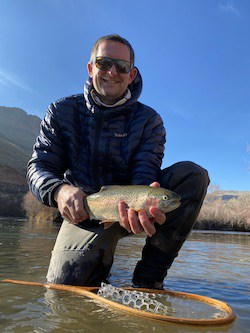
About the Author
My name's Sam and I'm a fly fishing enthusiast just like you. I get out onto the water 80+ times each year, whether it's blazing hot or snow is falling. I enjoy chasing everything from brown trout to snook, and exploring new waters is something I savor. My goal is to discover something new each time I hit the water. Along those lines, I record everything I learn in my fly fishing journal so I can share it with you.
Follow me on Instagram , YouTube, and Facebook to see pictures and videos of my catches and other fishing adventures!
